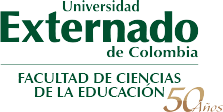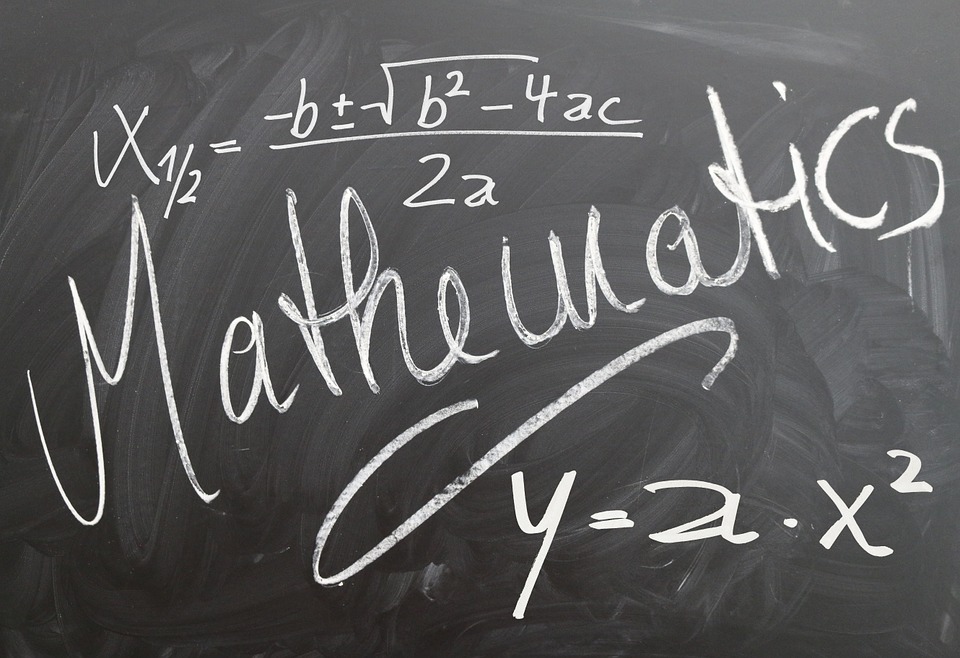4 de mayo de 2019
Towards a Conception of Didactics in Teaching Mathematics (First Part)
Marco Feria
The leading didactic approaches in the field of Mathematics in the Master’s program in Education with emphasis on research at Universidad Externado de Colombia focused on research, yield the reflection of student-researchers’ inquiry: what is the possibility to find the way to state a meaningful relationship between teaching and learning, and the object of study (disciplinary knowledge) in educational praxis? This reflection becomes relevant when it emerges from an intention to transform the relationship between the learning-teaching process of Mathematics, and particularly, in search of the solution of typical learning problems in secondary school and higher education contexts. This intention generates the implementation of several didactic approaches linked to the study of Didactics in Mathematics, proposed by different scholars.
In this regard, we start from the premise that the study of educational phenomena is characterized by its complexity. The different factors entailed in the teaching and learning of Mathematics are equivalent to knowledge, attitudes, aptitudes, communication, systems of authority, processes and procedures, and forms of representation, among others and are determined by culture, society or institutions, and by the interaction between teachers and academic communities as well. These factors interfere with the institutionalization of mathematical knowledge and, consequently, the insertion of a culture of mathematics in our students.
It is worth mentioning that, for the emphasis, in particular, several French scholars have been considered. The French school of Didactics has developed a fundamental conception of Didactics in Mathematics from the contributions of Douady (1984), Vergnaud (1985a), Chevellard (1988a) and Brousseau (1988) that includes epistemological, social, and cognitive dimensions and has considered the interactions between knowledge, students and teachers within the classroom context. Likewise, there are other fundamental authors such as D’Amore (2006), Godino (1998) and Fandiño (2006) who enriched these positions.
Having a clear idea about the particular characteristics of these schools of Didactics allows to determine if it is possible to carry out the didactic transposition (from wise knowledge to teachable knowledge) independently from the object of study within the classroom to show how the direct relationship between theory and praxis and its implications are part of the teacher’s task.
Douady (as cited in D’Amore, s.f.) states that Didactics implies the study of the processes of transmission and acquisition of the different contents of a science (Mathematics) and aims at describing and explaining the phenomena related to the relationships between teaching and learning (p. 7). Vergnaud (1985) offers a very similar definition when he states that Didactics is a discipline that studies the processes of transmission and acquisition related to the specific mastery of a discipline. Furthermore, Brosseau (1998) mentions that studies on didactics have emphasized on the teaching process neglecting some aspects linked to learning.
This approach has been criticized since it deals with the strategies, which used by themselves, might improve teaching, but not necessarily learning. One of them, expressed by Moreno (cited in D’Amore, 2006), states that directing everything towards teaching, disregarding whether it is conceived as a result of an artistic reflection, does not assure learning (p. 51). In addition, Armella (2006) emphasizes that for teachers, the use of meaningful teaching strategies ensures concrete and fascinating revealing experiences in children to explore what leads to learning, to be stable and profound; in some way meaningful, allowing students to be more skilled and competent.
Finally, the didactic approach emerges from the conception of the use of strategies of intervention as a mediator between students’ knowledge and the teacher’s, by which the relationship between knowledge-knowing and the student is mediated by the use of experimental devices, which involve very positive cognitive results. These results are given from didactic strategies that turn out to be intermediaries between knowledge, the teacher and the student. That is to say, the research considered experimental leads to what D’Amore (2006) articulates as going into the field of epistemology of learning, which entails thinking of specific studies of the discipline that emphasize (p. 65) on errors, conceptions, obstacles, difficulties, didactic proposals, cognitive processes, diagnoses, the states of the art and evaluation of learning, among others.
In sum, from these reflections, different approaches of the Didactics of Mathematics teaching emerge, and in some way, they are cited in the research studies conducted by students in the Master’s program in Education and who have to do with the research in the classroom setting and its influence on educational praxis.
_______________________
References
Brousseau, G. (1986). Teoría de las situaciones didácticas. Grenoble, Francia: Ediciones El pensamiento salvaje.
Brousseau, G. (1988). Teoría de situaciones didácticas. Francia: Ediciones El pensamiento salvaje.
Brousseau, G. (1989). Fundamentos y métodos de la didáctica de las matemáticas. Publicado con el título. “Fondements et méthodes d ela didactiques des mathématiques, en la revista, Recherches en Didactique des Mathematiques, Vol 7, n 2, pp 33. Traducido por Centeno, J ; Melnado, B ; Ramón, J.
Chevallard, Y. (1991). Dimension instrumentale, dimension sémiotique de l’activité mathématique. Séminaire de Didactique des Mathématiques et de l’Informatique de Grenoble. LSD2, IMAG, Université J. Fourier, Grenoble.
Chevallard Y. (1992). Concepts fondamentaux de la didactique: perspectives apportées par une approche antropologique. Recherches en didactique des mathématiques. 12, 1, 73-112.
D’Amore, B. (S.F.). La didáctica de la matemática a la vuelta del milenio: Raíces, vínculos e intereses, 1- 12. Recuperado de http://welles.dm.unibo.it/rsddm/it/articoli/damore/365%20a%20la%20vuela%20del%20milenio.pdf
D’amore, B. (2006). Didáctica de la matemática. Universidad de Bologna, Italia. Bogotá. Colombia: Cooperativa Editorial Magisterio.
D’ Amore, B. (2006). Didáctica de la matemática. Bogotá, Colombia: Cooperativa Editorial Magisterio.
D’amore, B. (2006). Didáctica de la matemática. Universidad de Bologna, Italia. Bogotá, Colombia: Cooperativa Editorial Magisterio.
Fandiño, M. (2006). Currículo y evaluación en matemáticas. Bogotá, Colombia: Cooperativa. Editorial Magisterio.
Godino, J, D., & Batanero, C. (1994). Significado institucional y personal de los objetos matemáticos. Recherches en Didactique des Mathématiques, 14(3), 325 – 355.
Godino, J. D., Contreras, A., & Font, C. (2006). Análisis de procesos de instrucción basado en el enfoque ontológico-semiótico de la cognición matemática. Recherches en Didactique des Mathematiques. 26(1) pp 39-88.
Godino, S. (Enero-Marzo 2002). Competencia y comprensión matemática. Uno: Revista de las Matemáticas, 29, pp 9-19
Vergnaud G. (Ed). (1985). Didactique et Acquisition du Concept de Volume. Nº spécial de Recherches en Didactique des Mathématiques, 4.


